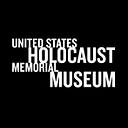Intimate portraits of lives interrupted by the Nazis
The story of the Holocaust is the story of survivors, yes, but it is mainly the property of the dead, of the murdered.
The diaries — both of those survived and those who did not — reveal them.
They were alone together in their thousands.
Mothers were slaughtered with their babies, or were torn from them.
Mothers watched as their babies were shot, burned, or starved, then followed them into death.
For fathers it was the same.
Whole families were murdered at once.
Whole towns.
In the span of short years, 6 million Jews and millions of others.
Who were they?
Names?
Black and white images, with indelible, peircing eyes. Accusing, lost, filled with terror and rage beyond our comprehension. Literally beyond it.
How do we put flesh back on the bones of the dead, and those who escaped?
We can listen to their words and worries as they shared them, privately with their diaries. It is a violation of their privacy, perhaps, but it also an act of redemption, even salvation in its most literal sense — saving them from oblivion.
Diaries of men, women, and children caught up in the Holocaust, and in so many senses destroyed by it, show them as fully human. They are by turns funny, filled with longing, and fear.
They are also hopeful. The people who wrote them do not know precisely what is coming. They share their everyday concerns and even their plans for escape with diaries — the most intimate records we now have.
While the diaries are nearly two dozen languages, they are universal in their humanity.
Read the stories of those who survived, understand them and their ultimate triumph.
Listen to the whispers of the dead and they live again, in the smallest of ways.
